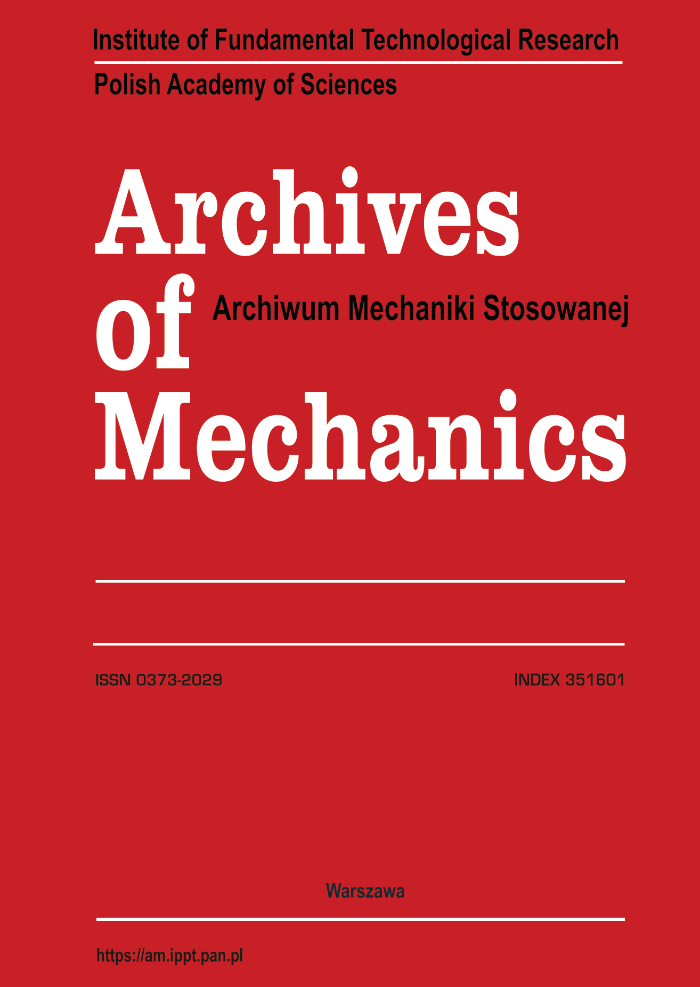Evaluating compression and nanoindentation in FCC nickel: a methodology for interatomic potential selection
Abstract
We performed molecular dynamics simulations to investigate the mechanical response of face-centered cubic (FCC) nickel under uniaxial compression and nanoindentation using traditional interatomic potentials, including the embedded atom method (EAM) and the modified embedded atom method (MEAM). By calculating the generalized stacking fault energy (GSFE), we analyzed the dissociated slip paths responsible for stacking fault formation and partial Shockley dislocations during mechanical loading. Our findings highlight the critical importance of selecting appropriate interatomic potentials to model compression and nanoindentation tests accurately, aligning simulations with experimental observations. We propose a practical methodology for identifying empirical interatomic potentials suitable for mechanical testing of single-element materials. This approach establishes a benchmark for FCC nickel simulations and provides a basis for extending these methods to more complex Ni-based alloys, facilitating comparisons with experimental results such as those from electron microscopy.
Keywords:
mechanical test, MD simulations, nickel, nanoindentation, compressionReferences
- F. Habashi, Nickel, Physical and Chemical Properties, [in:] R.H. Kretsinger, V.N. Uversky, E.A. Permyakov [eds.], Encyclopedia of Metalloproteins, Springer, New York, NY, 2013, https://doi.org/10.1007/978-1-4614-1533-6_338.
- Z. Ahmad, Chapter 9: Selection of materials for corrosive environment, [in:] Z. Ahmad [ed.], Principles of Corrosion Engineering and Corrosion Control, Butterworth-Heinemann, 479-549, 2006, https://doi.org/10.1016/B978-075065924-6/50010-6.
- J.H. Weber, Nickel-based superalloys: alloying, K.H.J. Buschow, R.W. Cahn, M.C. Flemings, B. Ilschner, E.J. Kramer, S. Mahajan, P. Veyssière [eds.], Encyclopedia of Materials: Science and Technology, Elsevier, pp. 6146–6149, 2001, https://doi.org/10.1016/B0-08-043152-6/01090-1.
- X. Liu, J. Fan, Y. Song, P. Zhang, F. Chen, R. Yuan, J. Wang, B. Tang, H. Kou, J. Li, High-temperature tensile and creep behaviour of Inconel 625 superalloy sheet and its associated deformation-failure micromechanisms, Materials Science and Engineering: A, 829, 142152, 2022, https://doi.org/10.1016/j.msea.2021.142152.
- T. Bhujangrao, F. Veiga, A. Suárez, E. Iriondo, F.G. Mata, High-temperature mechanical properties of IN718 alloy: comparison of additive manufactured and wrought samples, Crystals, 10, 689, 2020, https://doi.org/10.3390/cryst10080689.
- I. Dul, Application and processing of nickel alloys in the aviation industry, Welding International, 27, 1, 48–56, 2013, https://doi.org/10.1080/09507116.2011.600026.
- D.Q. Chen, G.-Y. Zhou, Z.P. Liu, S.-T. Tu, Nanoindentation experimental study on mechanical properties of as-cast BNi-2 solder alloy, Procedia Engineering, 130, 652, 2015, https://doi.org/10.1016/j.proeng.2015.12.289.
- R.A. Mirshams, R.M. Pothapragada, Correlation of nanoindentation measurements of nickel made using geometrically different indenter tips, Acta Materialia, 54, 1134, 2006, https://doi.org/10.1016/j.actamat.2005.10.048.
- A.E. Mayer, V.S. Krasnikov, V.V. Pogorelko, Homogeneous nucleation of dislocations in copper: Theory and approximate description based on molecular dynamics and artificial neural networks, Computational Materials Science, 206, 2022, 111266, https://doi.org/10.1016/j.commatsci.2022.111266.
- A. Jarlöv, W. Ji, Z. Zhu, Y. Tian, R. Babicheva, R. An, H.L. Seet, M.L.S. Nai, K. Zhou, Molecular dynamics study on the strengthening mechanisms of Cr–Fe–Co–Ni high-entropy alloys based on the generalized stacking fault energy, Journal of Alloys and Compounds, 905, 164137, 2022, https://doi.org/10.1016/j.jallcom.2022.164137.
- Z. Pan, Y. Fu, Y. Wei, X. Yan, H. Luo, X. Li, Deformation mechanisms of TRIP–TWIP medium-entropy alloys via molecular dynamics simulations, International Journal of Mechanical Sciences, 219, 107098, 2022, https://doi.org/10.1016/j.ijmecsci.2022.107098.
- F.J. Domínguez-Gutiérrez, A. Olejarz, M. Landeiro Dos Reis, E. Wyszkowska, D. Kalita, W.Y. Huo, I. Jozwik, L. Kurpaska, S. Papanikolaou, M.J. Alava, K. Muszka, Atomistic-level analysis of nanoindentation-induced plasticity in arc-melted NiFeCrCo alloys: The role of stacking faults, Journal of Applied Physics, 135, 185101, 2024, https://doi.org/10.1063/5.0200717.
- F. Dominguez-Gutierrez, S. Papanikolaou, S. Bonfanti, M. Alava, Plastic deformation mechanisms in BCC single crystals and equiatomic alloys: Insights from nanoindentation, Computer Methods in Materials Science, 24, 37–49, 2024, https://doi.org/10.7494/cmms.2024.1.0826.
- J. Ren, H. Wu, L. Wang, Z. Fan, Y. Qiu, L. Yu, E. Shi, Molecular dynamics simulation of nanoindentation of Nb–Zr alloys with different Zr content, Metals, 12, 1820, 2022, https://doi.org/10.3390/met12111820.
- L. Kurpaska, F. Dominguez-Gutierrez, Y. Zhang, K. Mulewska, H. Bei, W. Weber, A. Kosinska, W. Chrominski, I. Jozwik, R. Alvarez-Donado, S. Papanikolaou, J. Jagielski, M. Alava, Effects of Fe atoms on hardening of a nickel matrix: Nanoindentation experiments and atom-scale numerical modelling, Materials and Design, 217, 110639, 2022, https://doi.org/10.1016/j.matdes.2022.110639.
- K. Frydrych, F. Dominguez-Gutierrez, M. Alava, S. Papanikolaou, Multiscale nanoindentation modelling of concentrated solid solutions: a continuum plasticity model, Mechanics of Materials, 181, 104644, 2023, https://doi.org/10.1016/j.mechmat.2023.104644.
- A. Naghdi, F.J. Domínguez-Gutiérrez, W.Y. Huo, K. Karimi, S. Papanikolaou, Dynamic nanoindentation and short-range order in equiatomic nicocr medium-entropy alloy lead to novel density wave ordering, Physical Review Letters, 132, 116101, 2024, https://doi.org/10.1103/PhysRevLett.132.116101.
- E. Wyszkowska, C. Mieszczynski, Ł. Kurpaska, A. Azarov, I. Jóźwik, A. Kosińska, W. Chromiński, R. Diduszko, W.Y. Huo, I. Cieślik, J. Jagielski, Tuning heterogeneous ion-radiation damage by composition in NixFe1−x binary single crystals, Nanoscale, 15, 4870–4881, 2023, https://doi.org/10.1039/D2NR06178C.
- K. Mulewska, F.J. Dominguez-Gutierrez, D. Kalita, J. Byggmästar, G.Y. Wei, Self–ion irradiation of high purity iron: unveiling plasticity mechanisms through nanoindentation experiments and large-scale atomistic simulations, Journal of Nuclear Materials, 586, 154690, 2023, https://doi.org/10.1016/j.jnucmat.2023.154690.
- F.J. Dominguez-Gutierrez, A. Ustrzycka, Q.Q. Xu, R. Alvarez-Donado, S. Papanikolaou, M.J. Alava, Dislocation nucleation mechanisms during nanoindentation of concentrated FeNiCr alloys: unveiling the effects of Cr through molecular simulations, Modelling and Simulations in Material Science and Engineering, 30, 085010, 2022, https://doi.org/10.1088/1361-651X/ac9d54.
- A.P. Thompson, H.M. Aktulga, R. Berger, D.S. Bolintineanu, W.M. Brown, P.S. Crozier, P.J. In’t Veld, A. Kohlmeyer, S.G. Moore, T.D. Nguyen, R. Shan, M.J. Stevens, J. Tranchida, C. Trott, S.J. Plimpton, LAMMPS – a flexible simulation tool for particle-based materials modeling at the atomic, meso, and continuum scales, Computer Physics Communications, 271, 108171, 2022, https://doi.org/10.1016/j.cpc.2021.108171.
- G. Bonny, R.C. Pasianot, L. Malerba, Fe-Ni many-body potential for metallurgical applications, Modelling and Simulation in Materials Science and Engineering, 17, 025010, 2009, https://doi.org/10.1088/0965-0393/17/2/025010.
- R.E. Stoller, A. Tamm, L.K. Béland, G.D. Samolyuk, G.M. Stocks, A. Caro, L.V. Slipchenko, Y.N. Osetsky, A. Aabloo, M. Klintenberg, Y. Wang, Impact of short-range forces on defect production from high-energy collisions, Journal of Chemical Theory and Computation, 12, 2871–2879, 2016, https://doi.org/10.1021/acs.jctc.5b01194.
- P. Hohenberg, W. Kohn, Inhomogeneous electron gas, Physical Review, 136, B 864, 1964.
- W. Kohn, L.J. Sham, Self-consistent equations including exchange and correlation effects, Physical Review, 140, A1133, 1965.
- X.W. Zhou, R.A. Johnson, H.N.G. Wadley, Misfit-energy-increasing dislocations in vapor-deposited CoFe/NiFe multilayers, Physical Review B, 69, 144113, 2024, https://doi.org/10.1103/physrevb.69.144113.
- W.-M. Choi, Y.H. Jo, S.S. Sohn, S. Lee, B.-J. Lee, Understanding the physical metallurgy of the CoCrFeMnNi high-entropy alloy: an atomistic simulation study, npj Computational Materials 4, 1, 2018, https://doi.org/10.1038/s41524-017-0060-9.
- R.E. Smallman, R.J. Bishop, Chapter 7 – Mechanical behaviour of materials, [in:] R.E. Smallman, R.J. Bishop [eds.], Modern Physical Metallurgy and Materials Engineering, 6th ed., Butterworth-Heinemann, pp. 197–258, 1999, https://doi.org/10.1016/B978-075064564-5/50007-0.
- D.K. Patel, S.R. Kalidindi, Correlation of spherical nanoindentation stress-strain curves to simple compression stress-strain curves for elastic-plastic isotropic materials using finite element models, Acta Materialia, 112, 295–302, 2016, https://doi.org/10.1016/j.actamat.2016.04.034.
- A. Stukowski, Visualization and analysis of atomistic simulation data with OVITO – the Open Visualization Tool, Modelling and Simulation in Material Science and Engineering, 18, 1, 015012, 2010, https://doi.org/10.1088/0965-0393/18/1/015012.
- X. Gong, Z. Li, A.S.L. Subrahmanyam Pattamatta, T. Wen, D.J. Srolowitz, An accurate and transferable machine learning interatomic potential for nickel, Communications Materials, 5, 157, 2024, https://doi.org/10.1038/s43246-024-00603-3.
- Y. Su, S. Xu, I.J. Beyerlein, Density functional theory calculations of generalized stacking fault energy surfaces for eight face-centered cubic transition metals, Journal of Applied Physics, 126, 105112, 2019, https://doi.org/10.1063/1.5115282.
- C.B. Carter, C. Holmes, An accurate and transferable machine learning interatomic potential for nickel, The Philosophical Magazine: The Journal of Theoretical Experimental and Applied Physics, 35, 1161, 1977.
- A. Rida, M. Micoulaut, E. Rouhaud, A. Makke, The effect of strain rate on the deformation processes of nc gold with small grain size, Computational Materials Science, 172, 109294, 2020.
- D.H. Chung, W.R. Buessem, The Voigt–Reuss–Hill (VRH) approximation and the elastic moduli of polycrystalline ZnO, TiO2 (Rutile), and α-Al2O3, Journal of Applied Physics, 39, 2777, 1968.
- Y. Luo, Isotropized Voigt-Reuss model for prediction of elastic properties of particulate composites, Mechanics of Advanced Materials and Structures, 29, 3934, 2021, https://doi.org/10.1080/15376494.2021.19137.
- E. Wyszkowska, C. Mieszczynski, Ł. Kurpaska, A. Azarov, I. Jóźwik, A. Kosińska, W. Chromiński, R. Diduszko, W.Y. Huo, I. Cieślik, J. Jagielski, Tuning heterogeneous ion-radiation damage by composition in NixFe1−x binary single crystals, Nanoscale, 10, 4870, 2023, https://doi.org/10.1039/d2nr06178c.
- K. Van Workum, G. Gao, J.D. Schall, J.A. Harrison, Expressions for the stress and elasticity tensors for angle-dependent potentials, Journal of Chemical Physics, 125, 144506, 2006, https://doi.org/10.1063/1.2338522.
- G. Clavier, N. Desbiens, E. Bourasseau, V. Lachet, N. Brusselle-Dupend, B. Rousseau, Computation of elastic constants of solids using molecular simulation: comparison of constant volume and constant pressure ensemble methods, Molecular Simulation, 43, 1413, 2017, https://doi.org/10.1080/08927022.2017.1313418.
- J.R. Neighbours, F.W. Bratten, C.S. Smith, The elastic constants of nickel, Journal of Applied Physics, 23, 389, 1952.
- S. Pathak, S.R. Kalidindi, Spherical nanoindentation stress–strain curves, Materials Science and Engineering: R: Reports, 91, 1–36, 2015, https://doi.org/10.1016/j.mser.2015.02.001.







